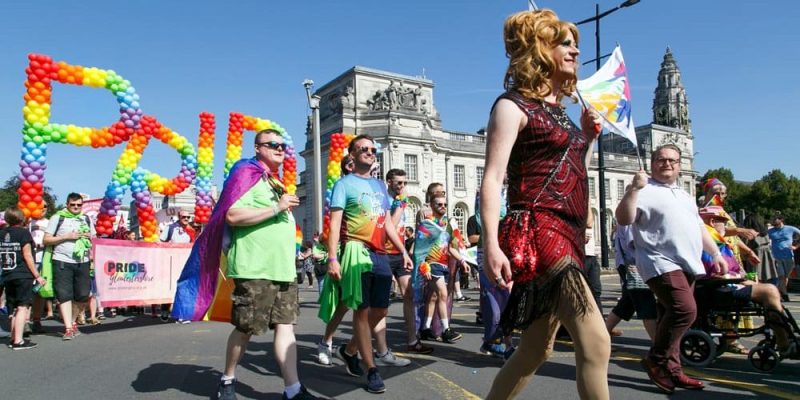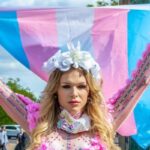We explain what a non-binary gender person is, their history and their flag. Also, gender identity and gender expression.

What is a non-binary gender person?
A non-binary gender person is one who does not feel identified with any of the terms of the traditional duality between the feminine and the masculine in society, that is, she considers herself somewhere in between, or in both categories at the same time, or even in one or the other depending on the moment in her life.
It is an “umbrella” term, that is, a very broad category within which different positions regarding gender can be found, such as:
- agender people. Those who identify with a “null gender” or “white gender” that does not fit into either masculine or feminine.
- genderfluid people. Those who identify with a male gender, a female gender or a non-binary gender depending on the moment in life and specific conditions.
- Biggender people. Those who identify with both genders at the same time, that is, they can be masculine and feminine simultaneously.
- pangender people. Those who identify with multiple genders, not only the two traditional binaries, but also with others included in this list.
It is important to understand that non-binary gender has nothing to do with sexual orientation or with people's erotic tastes, but rather it is a way of thinking about the relationship with one's own essence, that is, with what we understand as our psychological and social identity. So a non-binary person can be attracted to people of any sex or gender, in the same way that anyone who identifies with binary genders (male-female) does.
See also: Personal identity
Non-binary gender flag

Gender non-binary people have chosen a flag to represent themselves as a collective and to group their efforts to be recognized and accepted within a traditionally binary society. This flag is rectangular and contains four horizontal stripes of yellow, white, purple and black.
History of non-binary gender
Since ancient times, there have been in stories and mythological representations of characters that did not fit with the idea of the time of what a man or woman was. This includes people who are intersex, homosexual, or have traits of both genders, occupying a kind of intermediate position.
Even in some ancestral ethnic groups the possibility of people of a third gender was admitted, as was the case of certain eunuchs (castrated men) who were considered neither women nor men properly speaking.
On the other hand, throughout Western history There have been different personalities who have announced themselves to the world as “genderless.” or the “third sex.” For example, in the 18th century, American Jemima Wilkinson became a Protestant preacher after suffering a fatal experience, and returned to the world convinced that she had no gender, adopting the pseudonym Public Universal Friend (“Universal Public Friend”).
Another well-known case is that of the 19th century German activist, Karl Heinrich Ulrichs, who advocated for the rights of homosexuals, arguing that they were actually people of a “third sex”, whom he baptized as “Uranians”: intersex people, transsexuals and homosexuals.
What is gender identity?
gender identity It is the intimate and personal perception that a person has of themselves in terms of sexual identity (but not sexual or romantic orientation). That is, gender identity is the way we think of ourselves within the social possibilities of gender, that is, being a man, being a woman, being both, or being something else.
Gender identity is often defined as “psychological sex”, to differentiate it from what is strictly corporeal and biological, and it is thought that it would be made up of the individual's (self)perceptions and experiences. Gender identity, together with sexual orientation (who one feels attracted to) and gender role (how one lives one's sex socially), constitutes a person's sexual identity.
What is gender expression?

Gender expression is called the way people socially communicate their gender identity. This includes their tastes, attitudes, gestures and clothing, as well as their gender roles, that is, what is socially attributed to a person of one gender or another. It is equivalent to the totality of the external (social) elements through which a person lives their sexual identity which is opposed to the psychological and internal perception of the genre.
Thus, people whose gender expression is not subject to binary distinctions, that is, to what society attributes to “masculine behaviors” or “feminine behaviors,” are usually called cuirgender (from the English genderqueer). While people whose gender expression is indistinguishable, that is, it is impossible to externally judge whether it is a man or a woman, are usually called androgynous.
Other gender identities
In addition to the set of non-binary gender identities, such as agender, bigender, pangender or fluid gender, there are other categories in common use, such as:
- Cisgender. It refers to those people whose gender identity coincides with their body and biological sexuality, that is, who feel like men or women and their bodies biologically and socially reflect that feeling.
- Transgender. It refers to those people whose gender identity does not coincide with their body and biological sexuality, that is, who feel like men or women, despite being born with a female or male body, respectively.
Continue with: Sexuality
References
- “Nonbinary gender” on Wikipedia.
- “Gender identity” on Wikipedia.
- “What is non-binary gender?” (video) on CNN in Spanish.
- “What does it mean to be a gender non-binary person?” in the newspaper El Financiero (Mexico).





